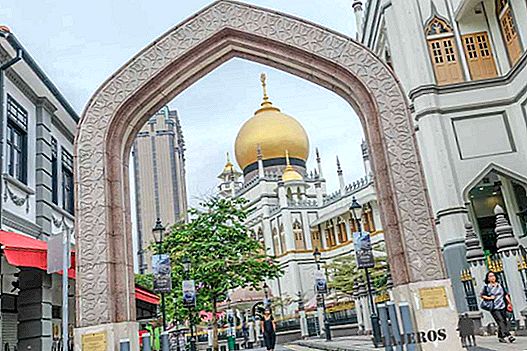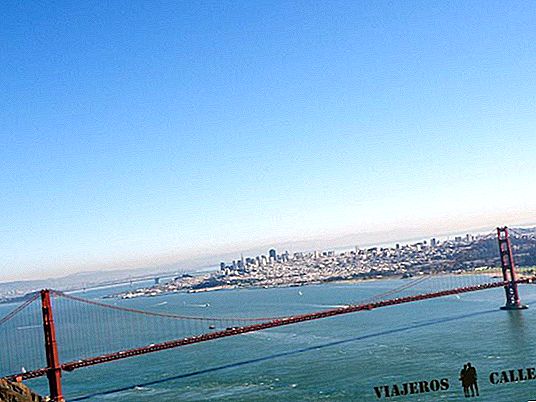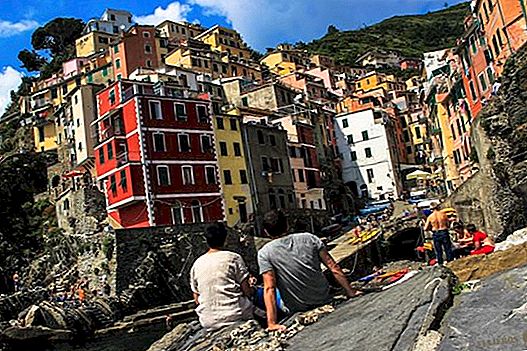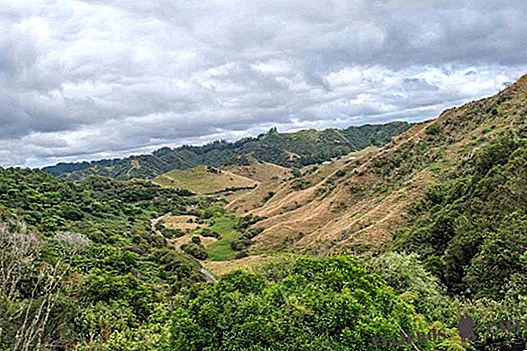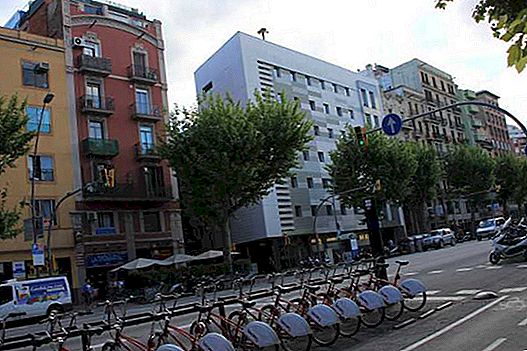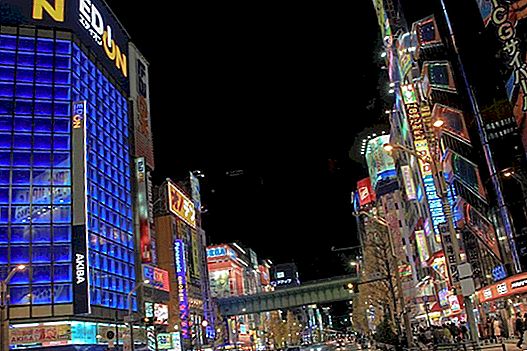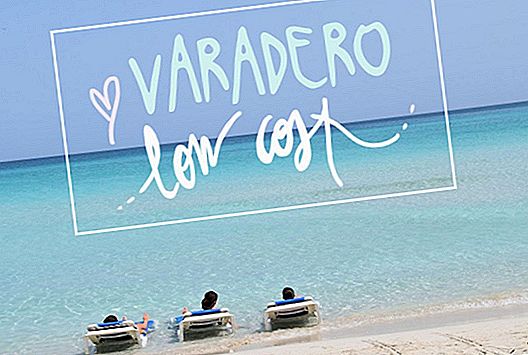
The Calakmul ruins They are one of the latest discoveries of the Mayan civilization in the Yucatan Peninsula. And they are not anything, it is said that it was one of the most important cities (if not the most) of the Classic Maya period. Although the buildings are not up to other archaeological sites such as Chichen Itza or Uxmal, the environment in which it is located, in the second largest biosphere reserve in America, makes it a magical place. Below we tell you more information for Prepare the visit to the archaeological zone of Calakmul for free.
The importance of the city of Calakmul must be linked to the moment it was inhabited, in the Classic Maya period. At that time it was one of the most powerful centers for this civilization, along with the cities of Palenque and Tikal (in Guatemala) with which it had continuous and violent struggles. According to the investigations, Calakmul was the epicenter of the so-called “Kaan Kingdom“, A confederation of Mayan cities that dominated this territory. Although human presence has been known for a longer time and it is estimated that the city was occupied for at least 1,500 years without interruption. A record!
The name of Calakmul in Maya means “two adjacent mounds” and refers to the two great pyramids that are still preserved in the enclosure, and to which we can climb (not without hitting ourselves a good beating). Although the old name was another, apparently "Ox Te 'Tuun". This is known thanks to the hieroglyphs recorded in the stelae. And this is another surprising fact of the place, because here the largest number of Mayan steles found in an archeological area are concentrated, with more than 120. On your visit you can see a few of them standing.
The stelae they are elongated stones of monumental character in which facts of the life of the rulers were carved. Many of these stelae have remained in relative good condition and have helped decipher the Mayan customs and relevant facts in their history.
Around the year 900 A.D. the city begins its decline and it is abandoned to its fate and to the fierce jungle, which we assume did not take long to engulf the stone buildings. Then it fell on a long nap, until the twentieth century that was discovered and adapted so that we can visit it.
* Video from inah.gob.mx
Where to sleep near Calakmul
According to our plans, since we were coming from Campeche, we decided to spend the night near Calakmul and the next day to make the visit in the morning calmly. The nearest city with more accommodation would be Xpujil. However, we found some houses very close to where the Becan Archaeological Zone is located and it was the perfect place. His name is Otoch Béek.
Depending on what your point of origin is and where you will spend the night, there will be different routes.
We leave Campeche and visit the archaeological zone of Edzná. That day we spent the night next to the ruins of Becan, near the town of Xpujil, and we leave for the next day in the morning the visit to Calakmul. If this is your itinerary, we recommend you do the following:
- From Campeche to Edzná it is about 55 km and a little more than 1 hour of travel (when the works are finished it will be less) The visit to Edzná can be extended for 1 hour and a half.
- From Edzná we were recommended to take the 188 road and join the 261 towards Hopelchen (up to here, 1 hour trip). There is a somewhat shorter route, by Pich, but we were told that there is not even the tato there and that if we had any problem it would be difficult to find help. In both cases they assured us that the roads are safe.
- After this town continue south along this same road until you reach Dzibalchén (45 minutes ride).
- There, take the 269 road that reaches Xpujil (1 hour and 45 minutes).
- From Xpujil to the detour to Calakmul it is 35 minutes
In total, from Edzná there are 3 and a half hours of road to Xpujil. In this town there are shops, restaurants and accommodation without problems. During the tour there are sections where the road is bumpy and in poor condition, but it is usually the best option.
If you want to make the visit during the day, or stay asleep near the turnoff towards Calakmul on Highway 186 (for example at the Hotel Puerta Calakmul), this would be the best:
- If you do it after visiting Edzná, first take Highway 188 west, until you reach Haltunchén (1 hour).
- From there, take Highway 188 to the south and inChampoton change to highway 261 until you reach Scarce (1 hour and a half).
- If you start the trip in San Francisco de Campeche, what you have to do is get to Champotón, either on highway 180 that passes along the coast and is free but slower (1 hour and 15 minutes), or on the highway 180D toll (1 hour, 65 pesos). And there continue towards Escárcega.
- In Scarce We will join the main road 186 and head east to the detour to Calakmul, where it is located at Hotel Puerta Calakmul (1 hour and a half).
It would then be approximately 4 hours from Edzná, or 2 and a half hours from San Francisco de Campeche, to the detour to Calakmul. The road is wider and is in better condition than the previous option, although it has some more heavy traffic (nothing that can bother you in excess).
EYE, what do we say until the detour, which is on Highway 186, because from here there are another 60 km to reach the ruins. Here we tell you more
As we say, the ruins of Calakmul are in the middle of the jungle, 60 km from the detour that is on the main road number 186. We took in this last section 1 hour and a half, the road is narrow and, although paved, there are sections with enough holes that can give you a scare. This section consists of two parts:
- At the entrance booth, just at the first turnoff on Highway 186, you are paid 50 pesos.
- From here they are 20 km until a second booth where you will have to pay others 68 pesos. The road of this section is not too bad and we did it in 22 minutes. Just before the booth you will have to take the detour to the left, leaving the Calakmul Museum in front.
- Now is when the road gets pretty bad. It is an area where it is not recommended to go more than 35 km / h, in addition to the state of the floor, because it is a protected area and animals can cross. This section is of 40 km and we took 1 hour and 9 minutes (at an average of 34.78 km / h, yeah!).
- When you arrive, there are quite a few parking spaces next to the access, and there you will have to pay a last entry of 70 pesos.
We leave you an interactive map with the different routes to reach Calakmul:
There are different entrances that correspond to the access to the archaeological zone and the protected natural park. In the first detour 50 pesos are paid, in the second there are another 68 pesos and finally, in the access to the ruins, another 70 pesos. So in total they are 188 pesos per person.
As we said before, the buildings of Calakmul, although some of them imposing, lack the splendor of other ruins. However, getting lost in the jungle in search of stone ruins hundreds of years old, accompanied by the screams of spider monkeys and the constant crackling of nature, is a unique experience.
In Calakmul they are proposed three different routes, with more or less duration. Our recommendation is to dedicate at least 2 or 3 hours and make the long journey. This is what we did:
After leaving the car in the free parking lot and going through the ticket office, we begin the visit walking along a path in the jungle. To take this stretch it takes about 10 or 15 minutes, in which the adrenaline is already rising, imagining that we are being watched by a group of hungry pumas.
Although there is some minor archeological area, we go directly to the Great Plaza. But first we can climb to the third tallest building in the city (with 25 meters): the Structure VII. From above we can have a more or less clear view of Structure II right in front of us. This would be the most important.
In the Large square we can travel both sides, because it is surrounded by small structures, continuing south.
In this extreme south, the Structure II, the highest in the whole enclosure, and to which we can climb. Above the views can disappoint a little, because all you see is a jungle sea, which overlooks the head of Structure I. Be careful because this building has a first terrace, but it is not the top. To reach the top you will have to surround it (better on the left side) and continue ascending the last part of the pyramid.
Precisely the Structure I It will be our next visit. If we still have strength and the trembling of the legs allows us, we can also climb to the top.
After this, it will be a good time to rest for a while and regain strength. Now take the stairs on the left and continue the path to the Great Acropolis. It is the least impressive area of Calakmul, although it is worth it just to immerse yourself fully in the depths of the jungle.
You will go through the XV structure, where apparently there are some graves (which we did not see), by the Structure XIII,the largest of the whole of the Grand acropolis (too much name for what it is) and for other minor structures around the North Plaza.
To return, we advise you to go through the XIV structure (climb it and lower it), you'll see that on the other side the path continues towards the exit.
Optionally from here you can visit the Acropolis of Chik Naab and finally the Chan Chiich area, we directly return to the car to end our visit.
In total we take as Three hours in doing the whole tour.
These are the buildings that you cannot miss on your visit to Calakmul:
Large square
It was the meeting place and the center of the city, from which roads (or sacbes) went to other places and neighboring towns (such as the one that communicated with El Mirador, in Guatemala, 40 km). This square was surrounded by structures of greater or lesser size and with different functionalities, with Structure VII in the north and Structure II at its southern end. It was also the place for sacred ceremonies.
Structure II
It is the main building of Calakmul and the tallest, with approximately 50 meters. It was built during the Early Classic (between 250 and 600 A.D.) and consists of a monumental central staircase and four buildings at the top that were added later.
If you think that the central steps are very steep or it gives you some vertigo, we advise you to climb on the right side, where it becomes easier (if you go up on the left there will come a time when you have to return because there will be no access to the intermediate terrace).
Structure I
It is the second highest with 40 meters and we find it southeast of Structure II. As in other buildings, there are steles at its base, and in this case, we can also see several altars.
Grand acropolis
It was the residential area of the city, where families of high society had to live, which mixed with public buildings. Here we highlight Structure XIII, the highest in this area, and Structure XIV, which was the only access to the Acropolis.
Chiik Nahb Acropolis
The importance of this Acropolis lies in its interesting and well preserved mural paintings.
Especially in this place, you have to be especially careful with some aspects. These are our recommendations:
- On the entire stretch of road within the reserve carry a reduced speed. It is an area with amount of little animals that they can jump at any moment to the road and for nothing in the world we want to run over them. Although it is the habitat of felines as impressive as the puma or jaguar, you will probably only find super-beautiful peacocks, deer, skunks or birds.
- In the archaeological area you may find groups of Spider monkeys. They are usually at the top of the trees and do not bother, beyond their howls (which seem rather roars). Do not interact with them, do not feed them and do not scare them, remember that you are at home
- The schedule It is from 8:00 to 17:00 every day. Although it is not recommended to start the visit beyond 3:00 pm.
- What You have to take? The first light clothes and comfortable shoes, mosquito repellent (especially in the summer months), plenty of water and some food (some cereal bars or some grotto would be perfect). Almost the entire visit is done in the shade, so in this case sunscreen and cap is not essential.
- And of course, go with him full tank. The nearest gas stations are about 100 km away, so don't play it.
- You're going to lose coverage, so it is best that you download the offline map in the maps.me. Although we have read that in the museum, which is halfway there is wifi.
- More information on its official website.
- There is a guided excursion that leaves daily from Bacalar, it is a good idea to do it if you do not want to rent a car! You can book it here.
- HOW TO VISIT THE COBÁ ARCHAEOLOGICAL AREA IN MEXICO
- HOW TO VISIT THE TULUM ARCHAEOLOGICAL AREA IN MEXICO
- GUIDE TO VISIT THE ARCHAEOLOGICAL AREA OF CALAKMUL, IN MEXICO
- GUIDE TO VISIT THE EDZNÁ ARCHAEOLOGICAL AREA IN MEXICO
- GUIDE TO VISIT THE UXMAL ARCHAEOLOGICAL AREA IN MEXICO
- HOW TO VISIT THE MAYAPAN ARCHAEOLOGICAL PARK IN MEXICO
- GUIDE TO VISIT CHICHÉN ITZÁ: THE MOST FAMOUS MAYAN RUINS IN MEXICO
- VISIT TO THE MAYAN RUINS OF EK BALAM
We hope our guide to visit the archaeological zone of Calakmul Help you to prepare your visit for free. As you can see, it is one of the most amazing Mayan ruins in all of Mexico, and should be in your travel plans.

Save on your trip
Flights flights to Mexico: bit.ly/2Oin75W
accommodation cheap in Mexico: booki.ng/2PsP5lb
Stay withAirbnb and get€ 25 discount: here
Activities and excursions in Mexico: bit.ly/2Jt3wzi
Rent a car with the best discounts: bit.ly/2PxxcRn
Travel insurance IATI with a5% discount: bit.ly/29OSvKt


